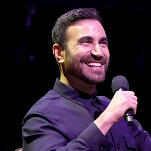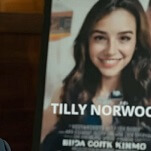Chaplin's Essanay Comedies (Vols. 1-4)

After dancing for spare change in the streets as a child, Charlie Chaplin's ascent to stardom must have seemed stranger to him than it did to most. But ascend he did, becoming one of the biggest stars in the early days of moviemaking. Chaplin is one of the few stars whose surge in popularity coincided with an increase in creativity: As he became more popular, he became more inventive, producing increasingly ingenious films that redefined the terms of cinematic comedy. He also did it quickly: After an apprenticeship with Mack Sennett, Chaplin jumped to Essanay in 1915, and though he spent just one year there before moving to Mutual, Chaplin churned out film after film, refining his trademark Little Tramp character along the way. Watching him develop his craft as an actor and director is the greatest pleasure of the four-tape Chaplin's Essanay Comedies, which compiles the whole of his work at Essanay in restored, remastered form. Things start a little roughly with His New Job, a somewhat aimless film that at one point features Chaplin strolling about drunk, a cigarette dangling from his lip, abusing people at random. But later films move toward a more familiar version of the character, and by the time The Tramp was finished, it's fully formed. Featuring the requisite slapstick antics, this time in a farm setting, it also presents a theme of unrequited love and an unhappy ending, elements of sentimentality that audiences for comedy had never before seen in a movie. (This element of sentiment has caused Chaplin to fall somewhat out of fashion of late, as if introducing pathos to movie comedy were a fault rather than an important accomplishment.) Other highlights from Chaplin's Essanay Comedies include his pugilistic turn in The Champion; A Woman, which features a rare drag performance; "The Bank," another sentimental romance; and A Night In The Show, with Chaplin in a dual role, neither of them the Tramp. Though something of a slog given the sheer time involved and the slapped-together quality of such clearly rushed work as In The Park, viewing these four tapes chronologically is eye-opening, as Chaplin becomes increasingly precise as a director and performer. Compare the subtlety of his mannerisms to the more traditional, broad work of the actors around him, and it becomes clear just how revolutionary Chaplin was and is. Though the transitional, sometimes inconsistent nature of his Essanay work occasionally gives the impression of watching Chaplin's years of near-greatness, this collection is a major accomplishment, both a delight to watch and an insightful look at genius in the making.







































